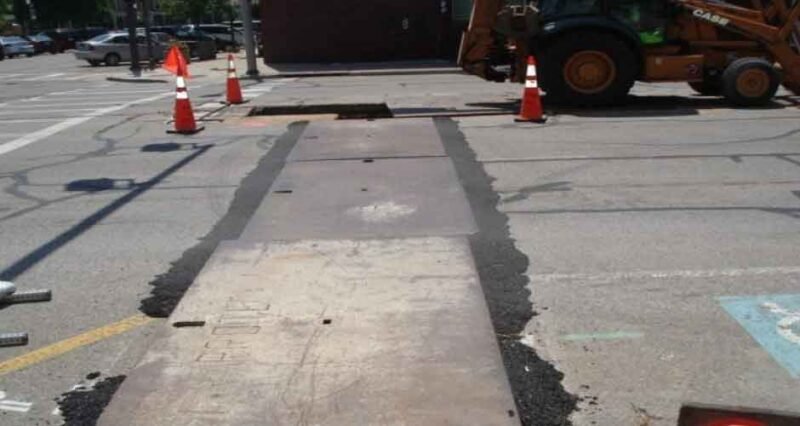
Maintaining efficient transportation networks cannot be overstated in an era of rapid urbanization and the constant need for infrastructure development. Roads and bridges serve as the lifeblood of modern society, connecting people, goods, and services.
However, these vital arteries are often under constant stress due to various factors, including extreme weather, heavy traffic, and ongoing construction projects. To ensure the longevity and safety of our infrastructure, steel road plate hire has emerged as a crucial solution. This blog post will explore the significance of steel road plate solutions in modern infrastructure projects.
The Evolution of Infrastructure Projects
Modern infrastructure projects have evolved significantly over the years. While traditional construction methods suffice, the increased demand for transportation and the growing complexity of urban landscapes require innovative solutions.
Infrastructure projects are no longer limited to building new roads; they also include repairing and upgrading existing structures. Steel road plate hire plays a vital role in this evolving landscape.
The Role of Steel Road Plates
Steel road plates are robust, temporary steel plates designed to cover excavations, trenches, or roadwork areas. They serve various purposes in infrastructure projects, including:
Safety: Steel road plates provide a smooth, safe surface for vehicles and pedestrians, reducing the risk of accidents and injuries during construction.
Preservation: They help protect underground utilities, preventing damage during construction activities.
Accessibility: These plates ensure that roads and walkways remain accessible, even when construction or maintenance work is ongoing.
Temporary Bridges: Steel road plates can also function as temporary bridges, facilitating the smooth flow of traffic when permanent bridges are under construction or repair.
Benefits of Steel Road Plate Hire
Cost-Effective: Steel road plate hire is a cost-effective solution for construction projects. Renting plates is often more economical than purchasing them, especially for short-term or occasional use.
Versatility: Steel road plates come in various sizes and thicknesses, making them adaptable to different project requirements. They can cover small excavations or create temporary roadways over large trenches.
Durability: Steel road plates are renowned for their strength and durability, making them suitable for heavy-duty applications. They can withstand the weight of even the heaviest construction vehicles.
Quick Deployment: Rental companies often provide efficient delivery and installation services, minimizing project downtime.
Safety Considerations
Safety is paramount in any infrastructure project. Steel road plates are a vital component in ensuring the safety of both construction workers and the general public:
Anti-Slip Surface: Steel road plates are designed with anti-slip surfaces to reduce the risk of accidents, even in adverse weather conditions.
Secure Installation: Properly installed steel road plates are stable and not pose tripping hazards.
Load-Bearing Capacity: These plates are engineered to handle the weight of heavy construction equipment and vehicles, ensuring that they remain in place during the project.
Compliance: Steel road plates must meet industry standards and regulations to ensure the highest level of safety.
Environmental Considerations
Environmental consciousness is a growing concern in modern infrastructure projects. Steel road plate hire also has ecological benefits:
Reusable: Steel road plates are reusable, reducing the demand for new materials and minimizing waste.
Minimal Impact: Temporary steel plates have a smaller environmental footprint than other construction materials.
Versatile: The adaptability of steel road plates can reduce the need for extensive excavation and alterations to the natural landscape.
Case Studies
To highlight the significance of steel road plate hire in modern infrastructure projects, let’s explore a few case studies:
New Bridge Construction: In constructing a new bridge, steel road plates served as temporary bridges for vehicle and pedestrian traffic, keeping the area accessible and safe during construction.
Pipeline Installation: Steel road plates were used to cover trenches during a pipeline installation project, ensuring that roads remained open for residents.
Road Resurfacing: During a road resurfacing project, steel road plates protected the underlying infrastructure, reducing the need for costly utility repairs.
Conclusion
In the ever-evolving landscape of modern infrastructure projects, steel road plate hire has emerged as an indispensable solution. Its cost-effectiveness, versatility, durability, and safety benefits make it vital for successful construction and maintenance projects. As the demand for infrastructure development continues to rise, the adoption of steel road plates will play a crucial role in ensuring the longevity and safety of our transportation networks. By embracing this technology, we are building stronger roads and a more sustainable and safer future for generations to come.

